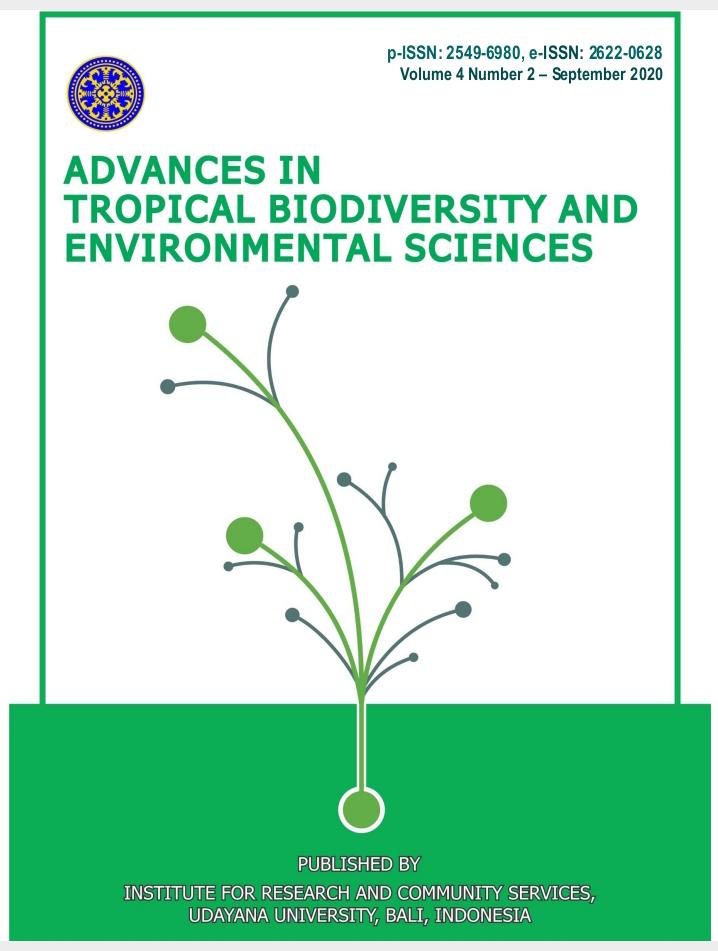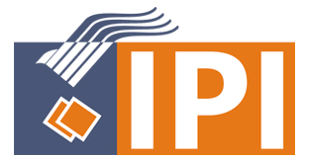Characteristics of Beach Typology for the Development of Marine Tourism in the Blue Lagoon Beach of Karangasem Bali
Abstract
Sygnathidae corals are included in the vurnarable category of CITES because the number in their natural habitat is decreasing. This is partly due to the high predatory activity and utilization as raw materials for traditional medicine so that it has high economic value. This research aims to study the ecological conditions including the distribution and abundance of Sygnathidae reef fish in the waters of Blue Lagoon Karangasem and to study the ecological conditions of the waters. The main marine tourism and recreation activities at Blue Lagoon Beach Karangasem, Bali are now snorkeling tours. This requires attention to the preservation of coastal ecosystems, because tourism is an industry that is very sensitive to external changes, so the region is of concern. Besides studies on marine tourism activities, scientific studies on tourism carrying capacity are also needed to determine the maximum number of tourist visitors that can still be tolerated by an ecotourism area. This research was conducted in the Blue Lagoon Coast Karangasem Bali. This study uses primary data analysis of water quality analysis, the method of determining the suitability of the region based on the multiplication of scores and weights obtained from each water brightness parameter category S1 with a score of 15, coral community cover category S3 with a score of 5, coral life form category S1 with a score of 9 , reef fish category TS with a score of 0, current speed category S2 with a score of 2, and depth of the category S3 with a score of 1. This study was conducted for 3 months, namely in June-August. The determination of the research station is based on the Purposive sampling technique. Secondary socioeconomic data obtained by questionnaire, interview / interview. The purpose of this study is to examine the suitability of the area as a marine tourism activity and analyze the carrying capacity (carrying capacity) of marine tourism areas.
Downloads
References
[2] Saraswati SA, DAA Pebriani. 2016. Sea Horse Population Monitoring In Coastal Waters of Padang Bai Karangasem Bali. Samakia: Jurnal Ilmu Perikanan, 7(2), 100-105.
[3] Dina Kelautan dan Perikanan. 2004. Seeding Horses, http://www.dkp.go.id/content.php.c:1301
[4] Suharsono, 1996. Coral Reef Research Methods in the Diktat Coral Reef Ecosystem Research Methodology Training. Puslitbang Osenologi LIPI. Jakarta.
[5] Veron JEN. 2000. Corals of the world. Australian Institute of Marine Science, PMB3, Townsville MC, Qld4810.Australia. 1(3): p.463.
[6] Johan Y. 2017. A Study on the Potential of Seagrass Ecotourism in Basing Beach Dusun Limas Sebangka Island. Faculty of Marine and Fisheries Sciences, King Ali Hajj Maritime University. Tanjung Pinang.
[7] Veron JEN. 2000. Corals of the world. Australian Institute of Marine Science, PMB3, Townsville MC, Australia. 1(3).463 p.
[8] Yulianda F. 2007. Marine Ecotourism as an Alternative Utilization of Conservation-Based Coastal Resources. Science Seminar Department of Water Resources Management. Bogor (ID): Institut Pertanian BogorIUCN (2000). Red List of threatened animals. http://www.redlist.org/default.html.
[9] English S, C Wilkinson, V Baker. 1997. Survey manual for tropical marine resources. – Australia Marine Science Project Living Coastal Resources. Australia, pp. 390.
[10] Effendie, Hefni. 2003. Water Quality Study. Kanisius, Yogyakarta pp. 258.
[11] IUCN (2000). Red List of threatened animals. http://www.redlist.org/default.html.
[12] Saraswati SA, DAA Pebriani, K. Pratama. 2018. Coral Fish Ecology Syngnathidae as Ecotourism Supporting Power in Blue Lagoon Coastal Waters Karangasem, Bali. Advances in Tropical Biodiversity and Environmental Sciences, 2(2): 27-30.













